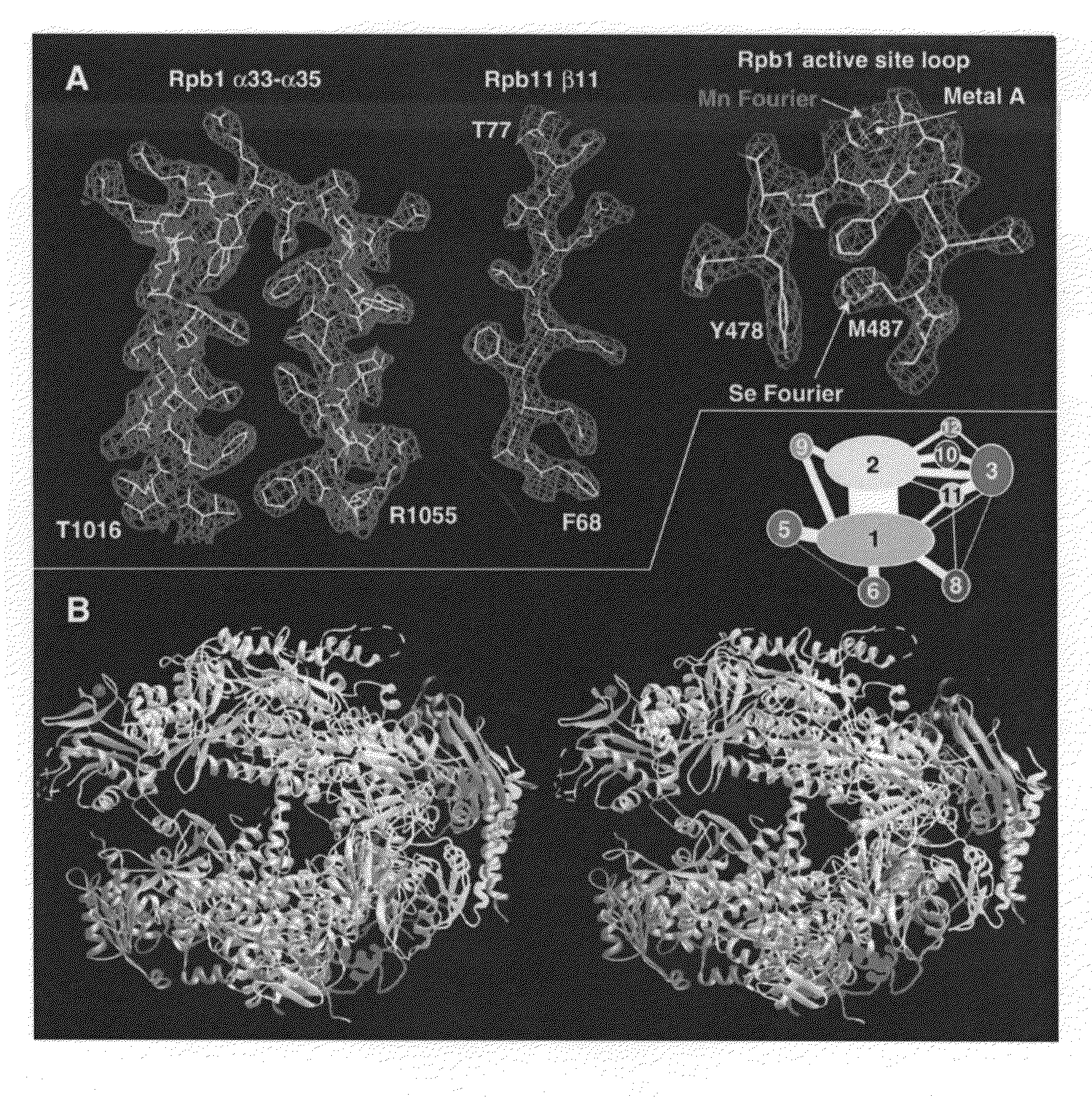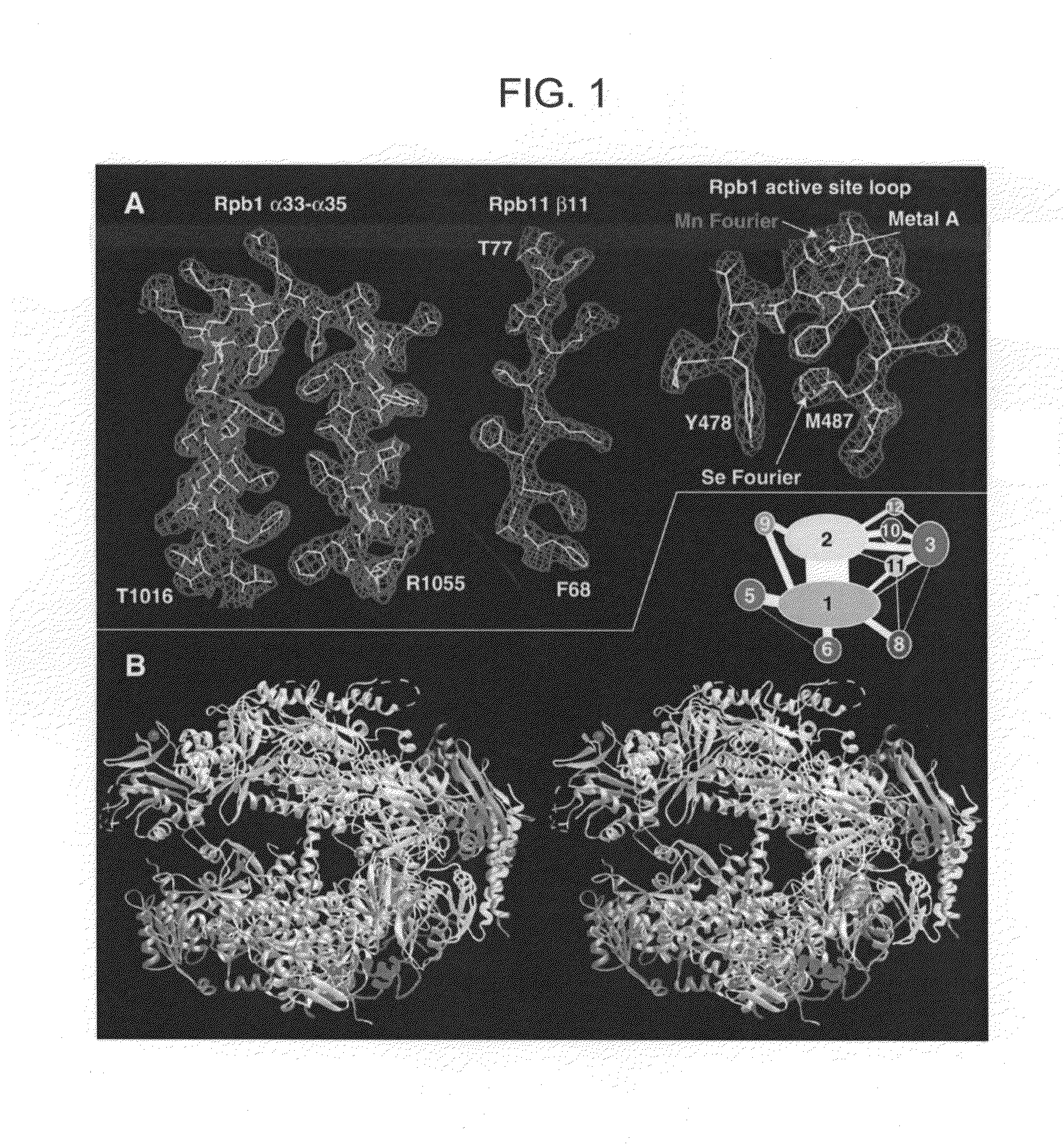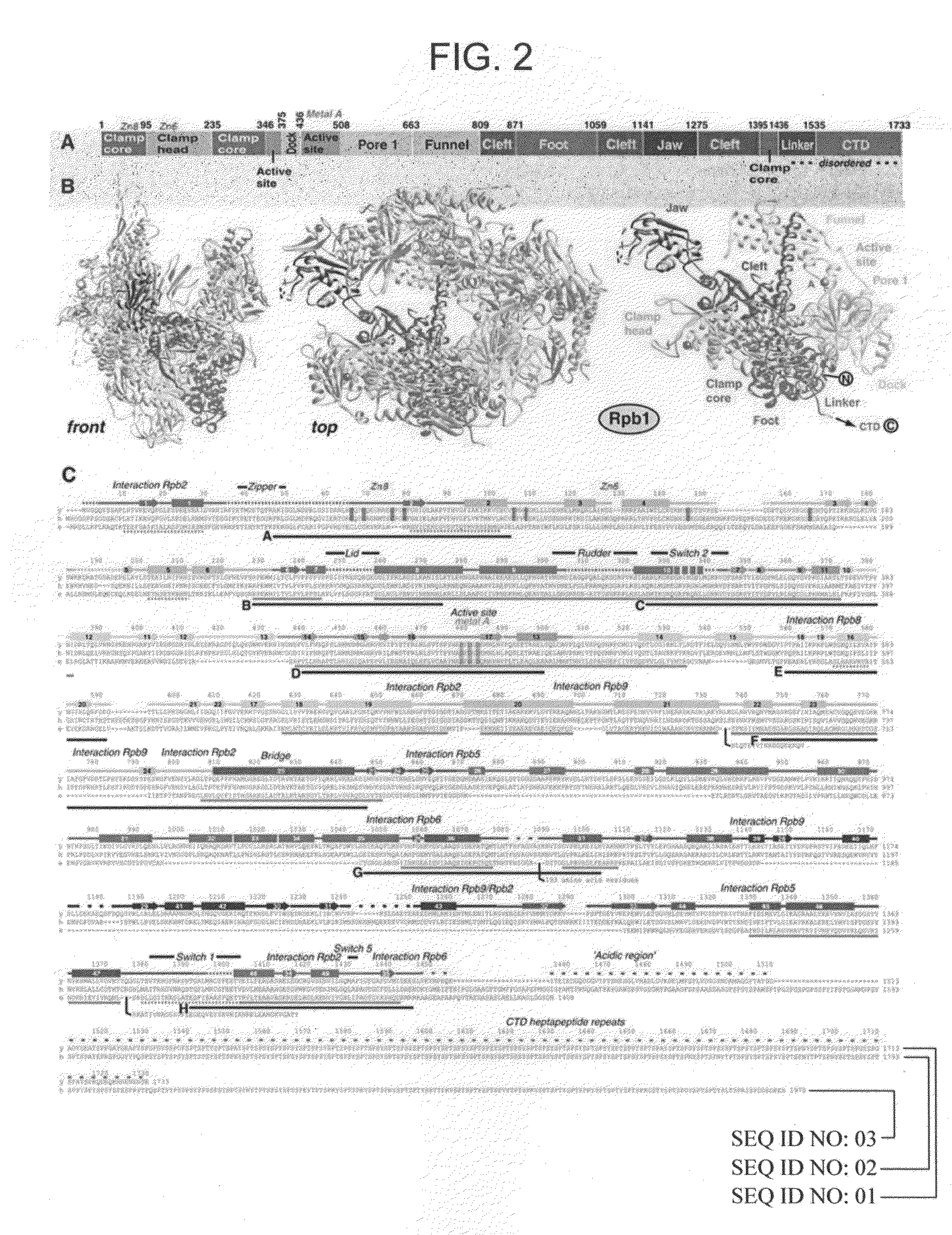Computer comprising three-dimensional coordinates of a yeast RNA polymerase II
a technology of computer and rna polymerase, which is applied in the direction of transferases, instruments, molecular structures, etc., can solve the problems of failure to suppress the activation defect at most promoters tested, death of cells, and potentially to organisms,
- Summary
- Abstract
- Description
- Claims
- Application Information
AI Technical Summary
Benefits of technology
Problems solved by technology
Method used
Image
Examples
example 1
RNA Polymerase at 2.8 Å Resolution
[0088]Structures of a 10-subunit yeast RNA polymerase II have been derived from two crystal forms at 2.8 and 3.1 angstrom resolution. Comparison of the structures reveals a division of the polymerase into four mobile modules, including a clamp, shown previously to swing over the active center. In the 2.8 angstrom structure, the clamp is in an open state, allowing entry of straight promoter DNA for the initiation of transcription. Three loops extending from the clamp may play roles in RNA unwinding and DNA rewinding during transcription. A 2.8 angstrom difference Fourier map reveals two metal ions at the active site, one persistently bound and the other possibly exchangeable during RNA synthesis. The results also provide evidence for RNA exit in the vicinity of the carboxyl-terminal repeat domain, coupling synthesis to RNA processing by enzymes bound to this domain.
[0089]Presented here are atomic structures determined from the previous crystal form a...
example 2
Structure of an Elongation Complex
[0121]The crystal structure of RNA polymerase II in the act of transcription was determined at 3.3 Å resolution. Duplex DNA is seen entering the main cleft of the enzyme and unwinding before the active site. Nine base pairs of DNA-RNA hybrid extend from the active center at nearly right angles to the entering DNA, with the 3′ end of the RNA in the nucleotide addition site. The 3′ end is positioned above a pore, through which nucleotides may enter and through which RNA may be extruded during back-tracking. The 5′-most residue of the RNA is close to the point of entry to an exit groove. Changes in protein structure between the transcribing complex and free enzyme include closure of a clamp over the DNA and RNA and ordering of a series of “switches” at the base of the clamp to create a binding site complementary to the DNA-RNA hybrid. Protein-nucleic acid contacts help explain DNA and RNA strand separation, the specificity of RNA synthesis, “abortive c...
example 3
Complex of RNA Polymerase II with an Inhibitor
[0150]The structure of 10-subunit 0.5-MDa yeast RNA polymerase II (pol II), recently determined at 2.8 Å resolution, reveals the architecture and key functional elements of the enzyme. The two largest subunits, Rpb1 and Rpb2, lie at the center, on either side of a nucleic acid-binding cleft, with the many smaller subunits arrayed around the outside. Rpb1 and Rpb2 interact extensively in the region of the active site and also through a domain of Rpb1 that lies on the Rpb2 side of the cleft, connected to the body of Rpb1 by an α-helix that bridges across the cleft.
[0151]Proof that nucleic acids bind in the channel comes from the molecular replacement solution of a transcribing pol II complex at 3.3 Å resolution. This structure shows the template DNA unwinding some three residues before the active site, followed by nine base pairs of DNA-RNA hybrid. Adjacent regions of Rpb1 and Rpb2 form a highly complementary surface, resulting in extensiv...
PUM
| Property | Measurement | Unit |
|---|---|---|
| Lattice constant | aaaaa | aaaaa |
| Volume | aaaaa | aaaaa |
| Volume | aaaaa | aaaaa |
Abstract
Description
Claims
Application Information
 Login to View More
Login to View More - R&D
- Intellectual Property
- Life Sciences
- Materials
- Tech Scout
- Unparalleled Data Quality
- Higher Quality Content
- 60% Fewer Hallucinations
Browse by: Latest US Patents, China's latest patents, Technical Efficacy Thesaurus, Application Domain, Technology Topic, Popular Technical Reports.
© 2025 PatSnap. All rights reserved.Legal|Privacy policy|Modern Slavery Act Transparency Statement|Sitemap|About US| Contact US: help@patsnap.com



